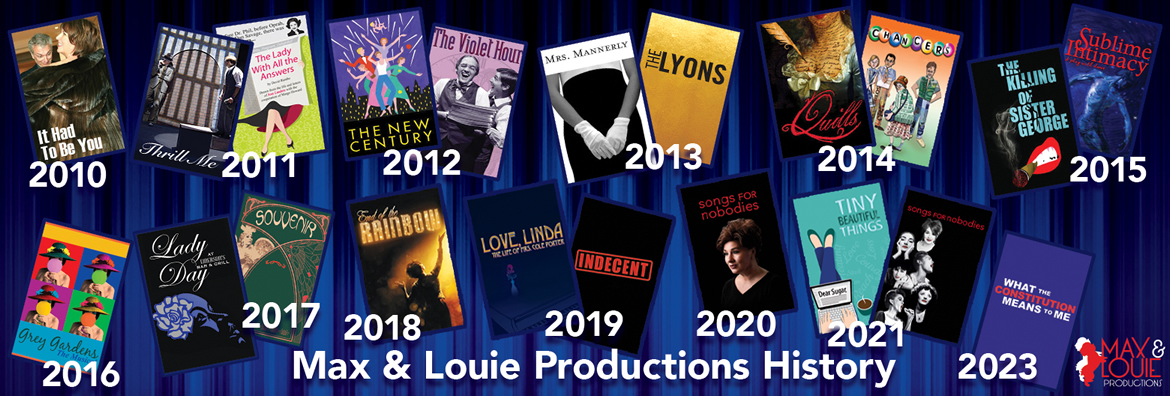The Killing of Sister George
Newspaper Review
Mark Bretz – Ladue News, July 15, 2015
‘Killing of Sister George’ Is a Theatrical Delight by Any Definition
Story: For six years actress June Buckridge has been playing the primary role of Sister George in the BBC radio serial, Applehurst. She’s grown accustomed to the part and the security it provides for her and her apartment mate, Alice “Childie” McNaught, who refers to June as “George,” as do many people who know her.
So it comes as a shock to George when she learns surreptitiously that Broadcasting House is considering some major changes to Applehurst, changes that involve the beloved Sister George. She’s especially worked up when she learns that Mrs. Mercy Croft, a company executive, wants to talk with her about her ‘future’ with the show.
Sister George may be the kindly, lovable nurse to the residents of Applehurst, but at home June is partial to hard drinking, smoking cigars and browbeating the naïve Childey, who is not above eating cigar butts at George’s sadistic whim. She’s also in trouble after an unpleasant incident with a group of nuns, for which Mrs. Croft demands she apologize.
With her world seemingly collapsing, George frantically looks for a way to salvage her part, her livelihood and her life itself before financial ruin and emotional destruction push her over the edge.
Highlights: When Frank Marcus wrote this dark comedy in 1965, the theme of lesbian love and sex was barely whispered, much less explored on stage. Now, the St. Louis premiere of this clever work a full half century later is stylishly directed by Brooke Edwards for Max & Louie Productions in a handsomely wrought presentation.
Other Info: A film adaptation in 1968 directed by Robert Aldrich was less subtle in its handling of homosexuality, leading to a rare X rating for a major motion picture. The passage of time may have altered societal views on sexuality, but Marcus’ intelligent script keeps this work alive and crackling with tension beneath the surface expressions of its characters.
The action takes place on a sumptuous set designed by Dunsi Dai elaborate in its details, down to the wallpapering of interior walls behind the primary scenic design that depicts the living room of George and Childey at center stage, a door and window to the kitchen at stage right and a partially hidden foyer at stage left. It’s meticulously decorated with a portrait of the Queen, some fine china for tea and other accoutrements contributed in Kyra Bishop’s prop design.
Cyndi Lohrmann’s costumes are wildly diverse, covering the flamboyant, gypsy attire of neighbor fortune teller Madame Xenia, the prim and proper ‘lady’ business look of Mercy Croft, the sexual, baby-doll togs of Childey and the masculine wardrobe of the aptly named George.
Add Bess Moynihan’s mood-enhancing lighting and a sound design by Michael Perkins that pinpoints the year 1965 with the tunes of Petula Clark, The Beatles and Herman’s Hermits and you have the recipe for a delicious period piece.
Edwards and her colleagues have made the decision to combine the first two acts before a single intermission, probably unnecessary given the more leisurely approach to theater in the ’60s in which this work is set. Regardless, that doesn’t put a damper on some truly superior acting that further propels the show.
Lavonne Byers once again inhabits her character in fascinating ways. Byers instinctively seems to know how to convey the roles she plays, never more so than in the over-the-top ‘butch’ approach to George. Whether she’s sitting open-legged, pulling on the drabbest of hats or sadistically bullying the too-timid-to-be-true Childey, her performance is one to relish for its richly nuanced breadth and depth.
Shannon Nara embodies the attributes of Childey’s name early in the production, then surprises the viewer with an increasingly coy and manipulative approach that indicates how her character knows what she wants and how to obtain it. It’s a performance that is clever and creeps up unsuspectingly.
Erin Kelley is as pent-up with her tightly pursed lips as she is with Mercy’s repressive garments in acutely conveying the cold-hearted broadcasting executive. Her amusing delivery of Mercy’s conniving lines reveals an undercurrent of power and passion in Mercy that contrasts with George’s blatant behavior.
Cooper Shaw adds some broad comedy as the wild-haired and highly theatrical fortune teller, who ironically may be the most honest of this quartet of exaggerated women, flamboyance and all.
Marcus considered his effort to be a parody of popular British serials, while others think of Sister George as a black comedy rather than a period drama. It’s probably a combination of all of those. It’s definitely a theatrical delight by any definition.
